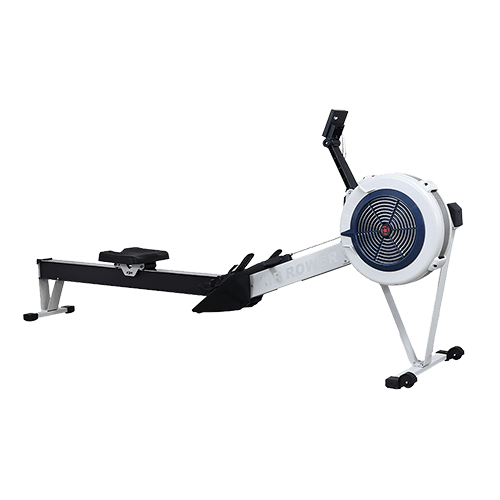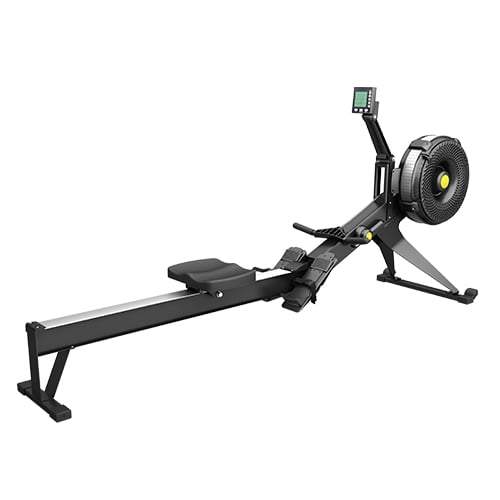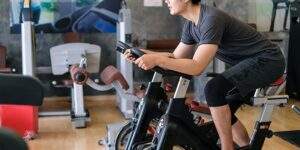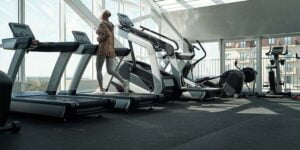Introduction

Rowing machines, or ergometers, have become increasingly popular in fitness circles for their efficiency in providing both strength and cardiovascular training. Rowing machine workouts are renowned for their ability to engage multiple muscle groups, improve endurance, and burn calories effectively. This comprehensive guide explores the benefits of rowing machine workouts, various workout routines designed for building strength and endurance, and practical tips for optimizing your rowing sessions. Whether you’re a seasoned rower or new to the machine, this blog will offer insights to help you make the most out of your rowing workouts.
The Benefits of Rowing Machine Workouts
Full-Body Workout
Rowing machines provide a full-body workout by engaging muscles across your entire body. Each rowing stroke activates the legs, core, and upper body, making it an efficient exercise for building overall strength.
- Legs: Quadriceps, hamstrings, glutes
- Core: Abdominals, obliques, lower back
- Upper Body: Biceps, triceps, shoulders, upper back
Cardiovascular Improvement
Rowing workouts are an excellent way to boost cardiovascular fitness. The continuous movement involved in rowing elevates the heart rate and improves lung capacity, contributing to better overall heart health and stamina.
Low Impact Exercise
Unlike running or high-impact exercises, rowing is a low-impact workout that reduces stress on the joints. This makes it an ideal choice for those recovering from injury or seeking a less jarring form of exercise.
Calorie Burning
Rowing can burn a significant number of calories, making it effective for weight loss and body composition management. The intensity of the workout can be adjusted to suit individual fitness levels, which helps in achieving personal fitness goals.
Designing an Effective Rowing Machine Workout
Warm-Up
A proper warm-up prepares your muscles and joints for the workout ahead, reducing the risk of injury. Incorporate dynamic stretches and a few minutes of easy rowing to gradually increase your heart rate.
Warm-Up Routine:
- Dynamic Stretches: Leg swings, arm circles (3-5 minutes)
- Easy Rowing: Low resistance at a moderate pace (5 minutes)
Strength-Building Workouts
For building strength, focus on high-intensity rowing intervals and resistance settings. Incorporate workouts that target different muscle groups and challenge your strength capabilities.
Strength-Building Routine:
| Exercise Type | Duration/Intensity | Description |
|---|---|---|
| High-Resistance Intervals | 30 seconds on, 30 seconds off | Row at high resistance for 30 seconds, followed by 30 seconds of rest. Repeat for 10-15 minutes. |
| Power Strokes | 10 minutes | Perform powerful strokes with a focus on maximum effort per stroke. |
| Circuit Training | 20-30 minutes | Combine rowing with bodyweight exercises like squats and push-ups. Alternate between rowing and bodyweight exercises. |
Endurance-Building Workouts
Endurance workouts emphasize prolonged rowing sessions at moderate to high intensity. These workouts help improve cardiovascular fitness and overall stamina.
Endurance-Building Routine:
| Exercise Type | Duration/Intensity | Description |
|---|---|---|
| Steady-State Rowing | 30-45 minutes | Row at a steady, moderate pace. Focus on maintaining a consistent rhythm. |
| Progressive Intervals | 4 x 10 minutes | Row for 10 minutes at a moderate pace, followed by 5 minutes of rest. Increase intensity each interval. |
| Long-Distance Rowing | 60 minutes | Row continuously for 60 minutes at a comfortable pace. Aim to increase distance over time. |
Combining Rowing with Strength Training
To maximize the benefits of rowing machine workouts, consider integrating rowing sessions with traditional strength training exercises. This combination enhances muscle development and improves overall fitness.
Sample Weekly Workout Plan:
| Day | Workout Type | Duration | Description |
|---|---|---|---|
| Monday | Rowing + Strength Training | 60 minutes | 30 minutes of rowing followed by 30 minutes of weightlifting. |
| Tuesday | Endurance Rowing | 45 minutes | Continuous rowing at a moderate pace. |
| Wednesday | Rest or Light Activity | – | Active recovery with light stretching or yoga. |
| Thursday | Rowing Intervals | 30 minutes | High-intensity rowing intervals with brief rest periods. |
| Friday | Strength Training | 45 minutes | Focus on lower body and core exercises. |
| Saturday | Long-Distance Rowing | 60 minutes | Extended rowing session at a comfortable pace. |
| Sunday | Rest | – | Full rest day to allow for recovery. |
Tips for Maximizing Rowing Machine Workouts
Maintain Proper Form
Proper rowing form is crucial for maximizing workout effectiveness and preventing injury. Key elements of good form include:
- Posture: Sit upright with shoulders relaxed.
- Grip: Hold the handle with a firm grip but not too tight.
- Stroke Technique: Drive with the legs, then engage the core, and finally pull with the arms.
Adjust Resistance and Damper Settings
Experiment with different resistance levels and damper settings to find what works best for your workout goals. Higher resistance and damper settings simulate rowing on open water, while lower settings provide a smoother rowing experience.
Monitor Your Progress
Track your progress using the rowing machine’s built-in metrics, such as distance, time, and stroke rate. Regularly reviewing these metrics helps you assess your performance and make adjustments to your workouts.
Stay Hydrated and Fuelled
Proper hydration and nutrition are essential for optimal workout performance. Drink water before, during, and after your rowing sessions, and consume a balanced diet to support your training efforts.
Comparing Rowing Machine Workouts

To help you decide which rowing machine workout is right for you, the following table compares different types of rowing workouts based on their benefits:
| Workout Type | Benefits | Duration | Intensity Level |
|---|---|---|---|
| Strength-Building Workouts | Builds muscle strength, improves power | 20-30 minutes | High |
| Endurance-Building Workouts | Enhances cardiovascular fitness, increases stamina | 30-60 minutes | Moderate to High |
| Combination Workouts | Balances strength and endurance, provides overall fitness | 60 minutes | Moderate |
| Long-Distance Rowing | Improves aerobic capacity, builds endurance | 60 minutes | Moderate |
Conclusion
Rowing machine workouts are an excellent way to build both strength and endurance while providing a full-body workout. By incorporating various workout routines and maintaining proper technique, you can maximize the benefits of rowing and achieve your fitness goals. Whether you’re looking to improve cardiovascular health, build muscle, or enhance overall fitness, rowing machine workouts offer a versatile and effective solution.
FAQ
Q:How often should I use a rowing machine for optimal results?
A:For optimal results, aim to use the rowing machine 3-5 times a week, combining strength-building and endurance workouts. Ensure you incorporate rest days to allow for muscle recovery and prevent overtraining.
Q:What is the best rowing machine workout for beginners?
A:Beginners should start with steady-state rowing sessions at a moderate pace, gradually increasing the duration and intensity as their fitness improves. Incorporating basic strength-building exercises and proper form is also essential.
Q:Can rowing machine workouts help with weight loss?
A:Yes, rowing machine workouts can help with weight loss due to their high calorie-burning potential and full-body engagement. Combining rowing with a balanced diet will enhance weight loss results.
Q:How do I prevent injury while using a rowing machine?
A:To prevent injury, focus on maintaining proper form, adjusting resistance settings appropriately, and warming up before workouts. Listen to your body and avoid overexertion or sudden, jerky movements.
Q:What should I eat before and after rowing workouts?
A:Before a rowing workout, consume a light meal or snack that includes carbohydrates and protein for energy. After a workout, eat a balanced meal with protein, carbohydrates, and healthy fats to aid in recovery and muscle repair.



